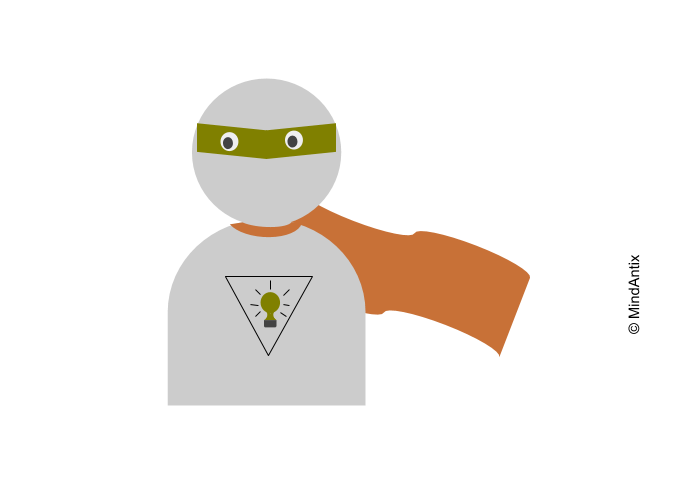At MindAntix, we’re passionate about igniting the spark of creativity in students. But let’s face it, coming up with truly novel ideas can feel daunting, and this is especially true for young students. That’s why we’re thrilled to announce a partnership with EvolveMe, an online platform from American Student Assistance, to launch the “Invent in an Hour” mini-course – a one-of-a-kind program designed to encourage students to become inventors in less than 60 minutes!
EvolveMe is a free online tool that helps students build different skills and explore various career options. Many students aren’t aware of the scope of education and career opportunities available after high school. ASA’s research indicates that students face a lack of awareness, access and confidence that can limit their growth and potential post high school.
With our new mini-course, we aim to address these three areas. Students get a deeper understanding of what creative thinking is and how it applies to almost all fields. By breaking down the invention process into manageable, bite-sized steps, we equip students with the tools and confidence to embark on their own creative journeys.
Demystifying the Invention Process
With our approach, we flip the script on traditional creativity methods and remove the pressure of “solving” predefined problems. Instead of starting with a problem and seeking a solution, we guide students through the power of associative thinking, a technique that sparks innovation by combining seemingly unrelated ideas.
Here’s how it works: imagine combining the “stretchable” aspect of a bracelet with a pillow to make a revolutionary pillow whose thickness can be adjusted by stretching. Or picture a pair of headphones that can double as a mood detector. Associative thinking makes these seemingly absurd combinations possible, and more importantly, increases the likelihood of generating truly original ideas – all within a student’s comfort zone.
Bowerbird Inspiration: Nature’s Mastermind
Our guide through this creative adventure is Curio, a character inspired by the bowerbird, a fascinating avian species renowned for its remarkable creativity. Male bowerbirds meticulously collect an array of colorful objects – from bottle caps to berries – to construct elaborate displays, showcasing their ingenuity to attract mates.
Curio embodies the essence of the bowerbird, encouraging students to gather diverse ideas and assemble them into something uniquely their own. Just as bowerbirds use their nests to express themselves and interact with their environment, Curio helps students see how assembling various concepts can lead to surprising and effective solutions.
Transforming Ideas into Real Inventions
The “Invent in an Hour” mini-course goes beyond simply brainstorming. It equips students with the practical steps to turn their newfound concepts into reality. Here’s what they’ll learn:
- Idea Generation: Students learn to generate ideas using associative thinking, encouraged by Curio’s playful guidance.
- Originality Check: Participants use tools to check their ideas against patent databases, ensuring their inventions are not only useful but also original.
- The Art of the Pitch: Students learn how to craft compelling pitches for their inventions, preparing them to present their ideas confidently.
By the end of this engaging mini-course, students won’t just have an understanding of the inventive process; they’ll have a tangible invention of their own, complete with a polished pitch ready to be shared with the world.
We believe that fostering creative confidence in students is not just about nurturing future inventors; it’s about empowering them to be problem-solvers, and lifelong learners. With the “Invent in an Hour” mini-course, we provide students with a stepping stone towards building their creative confidence.


